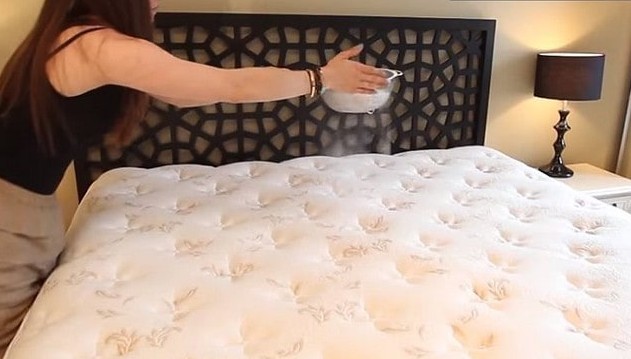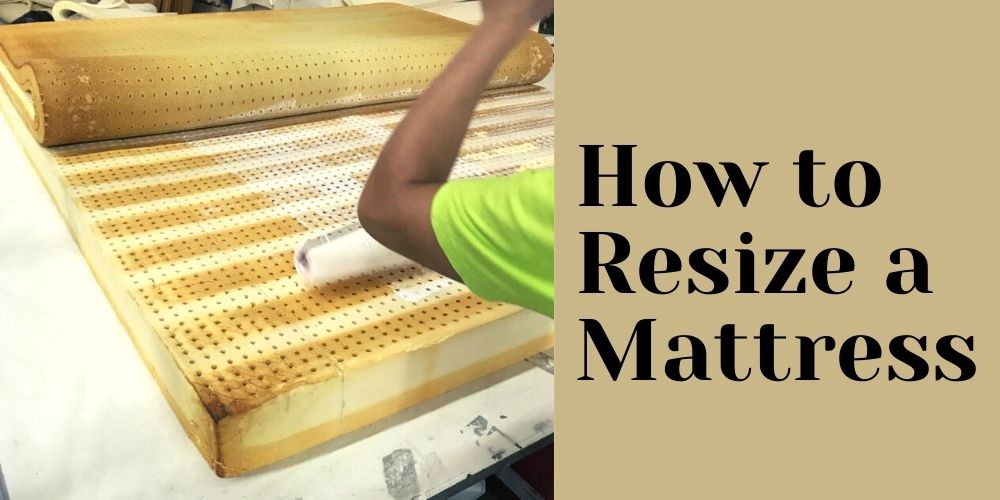Worried about that musty smell in your mattress? Are there new unexplained stains on your bed often? Well, these are some tell-tale signs of mold infestation on your mattress.

Mold on a mattress is a serious issue; however, many people still choose to ignore it. Mattress mold is detrimental to your health, especially if you are exposed to them for a long time. Thus you need to take care of the situation as soon as possible, and the first step is checking out the symptoms of a mold infestation.
Mold in mattress symptoms: 8 Signs You Have It
Breathing trouble on the bed
The mold in your mattress may cause and can aggravate your asthma allergies and general breathing troubles. So, if you start wheezing every time you get on the bed, it’s likely that your mattress has become the growing ground of mold.
However, it’s challenging as you may not see the molds. Molds often grow in the air pockets and channels of your foam mattress.
Worsening of skin conditions
Having eczema or psoriasis once in a while is understandable; however, if they are not curing or worsening when you get on the bed, chances are you have mold on your mattress. If your doctor’s treatment and medicines are not getting your results, it may be time to check your mattress.
Smelly mattress
If you have kids or elderly at home, mold might grow due to poop and urine stains on the bed. If the spots are growing or getting worse, you have mold growing in your bed for sure. Many times the black spots can be accompanied by other new colored spots.
You are getting flu-like symptoms
Flu-like symptoms can be congestion, sore throat, and headaches. Mold in the mattress often releases spores in the air. This often leads to respiratory and other health issues whenever you enter your room. If you start sneezing and wheezing continuously when you enter the room and if your condition gets far worse when you lie down, it’s mold for sure.
Smell remains
Often a memory foam mattress has a mild chemical smell that remains for a few weeks. However, that smell should dissipate sometime. On the flip side, mattresses other than memory foam should not have any smell, to begin with.
But if you still get some disturbing smell, like rotting food, for instance, in all probability you have mold growing in your mattress. This smell will typically be more potent a week before the black spots show.
Discolored mattress
Not every type of mold has the same black stains on the mattress. At times, the waste products released by the molds can also lead to purple and green spots.
Thus, if you see such discolored spots on your mattress without any reason, it is due to mold. Many times, people treat such spots with vinegar and enzymatic cleaners. However, if it doesn’t work, mold is surely growing in your mattress.
The mattress is always damp
If you have a perennial damp mattress, mold may be infesting it. Mattress often gets damp during sultry summer months or if you have spilled water on your bed by accident. If such things have occurred, make sure you dry your mattress daily. Moist and damp beds attract mold; thus, cleaning is essential.
The sudden appearance of bugs on the mattress
Insects often come to your bed if there is any food source; thus, the sudden appearance of grants or mites near your bed is a tell-tale sign of mold growing in your bed. Such insects are attracted to the smell of growing molds. As a rule of thumb, any bugs attracted to your bed other than bed bugs are a sure sign of mold growth in your bed. It is one of the most significant mold in mattress symptoms.
You May Find Useful Too: Do dryer sheets repel bed bugs?
What causes molds?
Mold often grows in a dark and damp environment where it can grow undisturbed. The underside of your mattress is the perfect location. It’s well protected from sunlight and transfers sweat from the bodies to the mold, which they use as food.
But thankfully, the mattress does not absorb a lot of moisture; most of it is absorbed by the sheets. Besides, washing the sheets regularly and circulating air on the underside of the mattress reduces the appearance of mold.
A mattress that is close to the ground or directly on it will not have a great chance of air circulation, and the emerging heat will prevent it from drying. Mold can grow on such a mattress.
How to prevent mold growth
Often it’s impossible to remove mold spores from home, and thus you need different approaches while treating mold. A few are listed below:

Alter the room humidity
If you have a damp bedroom, use a dehumidifier. Multiple different models fight humidity without hiking your electricity bills.
Buy a mold-resistant mattress
Latex of plant-based mattresses are highly resistant to mold attacks. You can also try coil mattresses that are sag-resistant and provide the ideal air circulation to prevent mold issues.
Avoid placing the mattress on the floor
The floor is not a safe surface as there can be spores on the floor. Besides, floors limit air circulation, which leads to increased mold growth. Thus, it’s advisable to use bed frames or even thick sheets and rugs to minimize the contact between the floor and mattress.
Aerate your mattress daily
Aerate mattress can help you greatly. So, open your windows and crank up your AC to let your mattress breathe. Additionally, reduce the sheets so that the mattress gets maximum air circulation. You can also rotate your mattress time to time to prevent mold growth.
Place your mattress in a protector
It’s ideal to use a waterproof encasement to prevent moisture from reaching inside the mattress. This will also keep the spores away, thereby lengthening the mattress’s lifespan.
How to clean mold from mattress
Indeed it’s disturbing to have mold growing on your mattress. However, there’s nothing to worry about if you clean the mattress effectively and in the early stages of infestation.

Some recommendations on mold cleaning are as follows:
You May Also Read: How To Disinfect A Mattress in 4 Easy Ways
Having mold growing in your bed is surely an undesirable situation; however, you can make it go away with early detection and effective cleaning.


